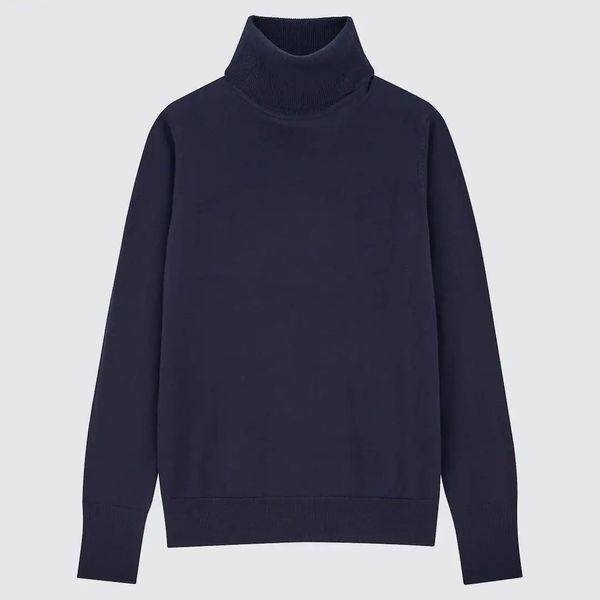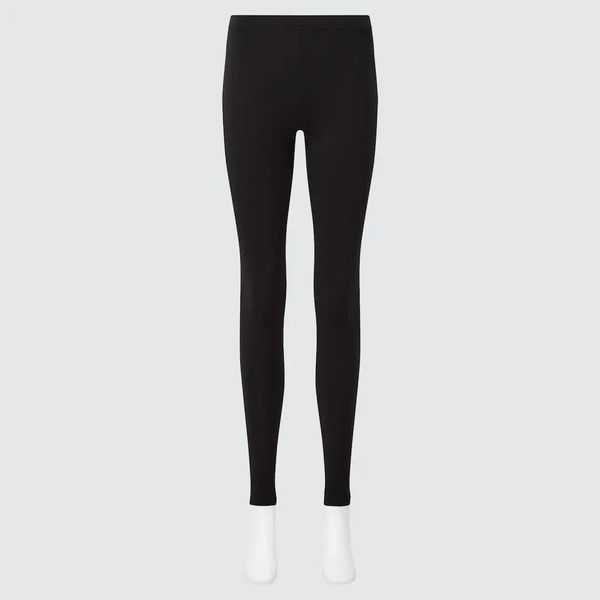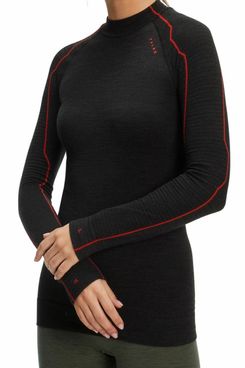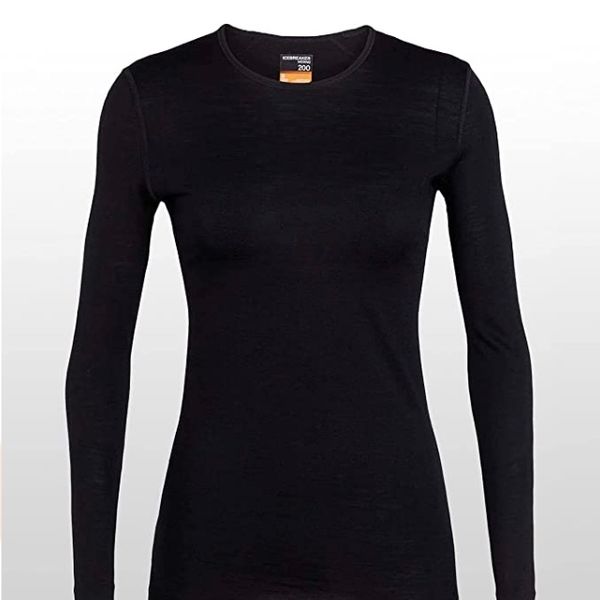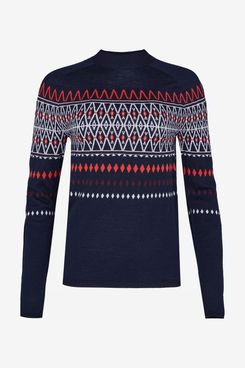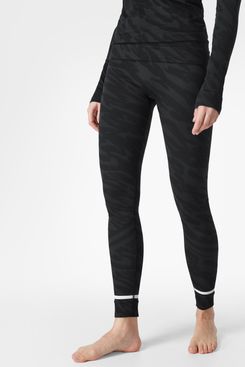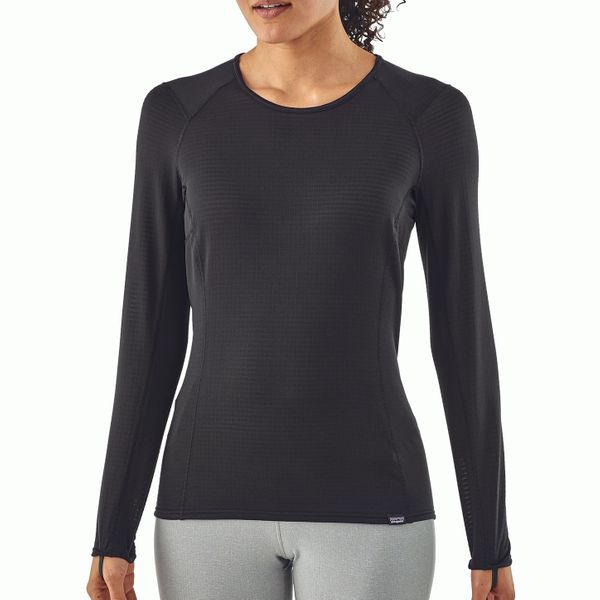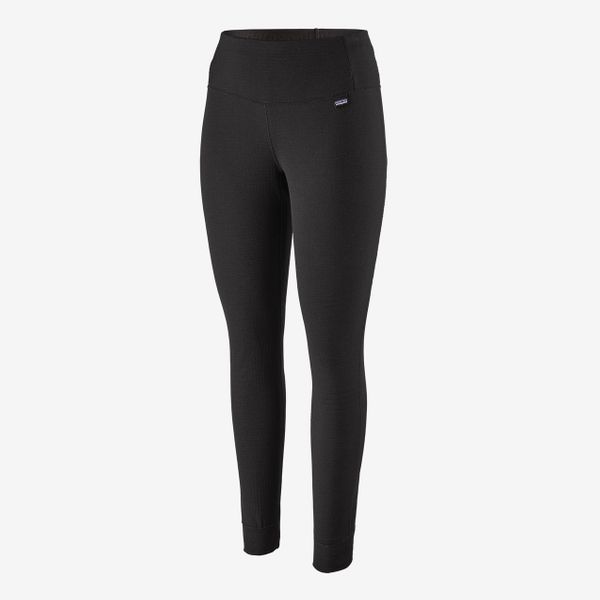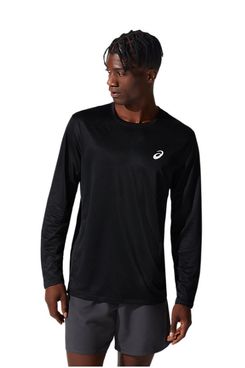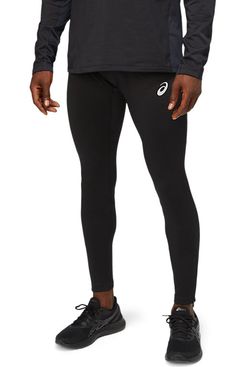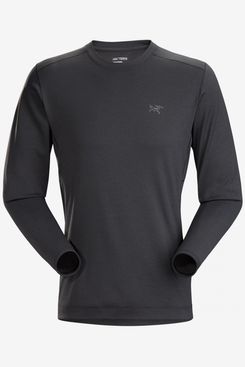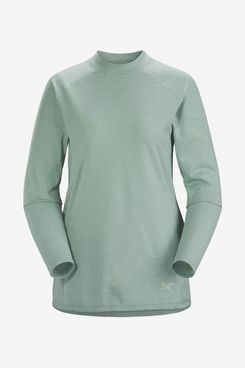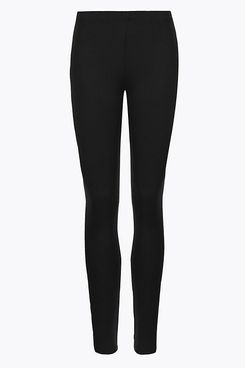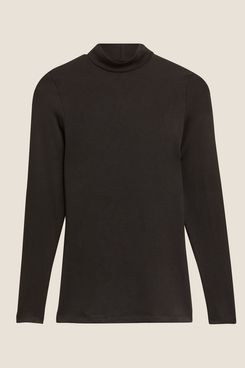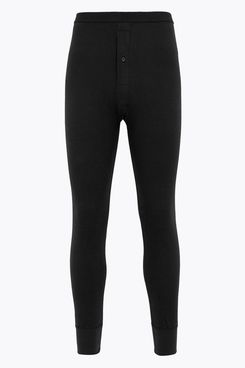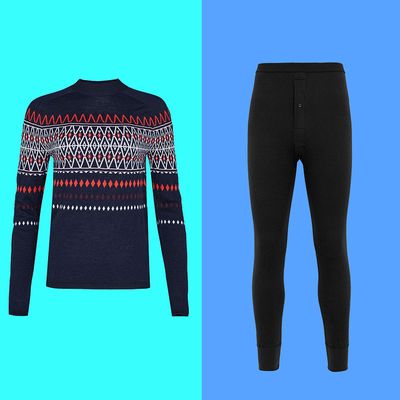
Whether you’re planning your first winter 10K or simply want to keep warm while meeting friends outdoors, thermals and base layers will certainly help. Thermals provide extra insulation by trapping warm air close to your body, and while you may associate thermals with nonnatural fibres and fabrics such as polyester and nylon, natural fibres are often just as effective at keeping you warm. Sonal Keay, founder of silkware company This Is Silk, says wool and silk are commonly found in thermals “as they are lightweight, moisture wicking, and dry quickly. They’re also naturally microbial”.
Though there is a plethora of options to choose from when selecting your thermals, not all options are particularly stylish. We spoke to five experts — including ultrarunners, skiers, and outdoorsy types — about the best thermals and base layers, all of which look good and perform to a high standard. We then went through our editor’s recommendations for combating everything from a draughty flat in South London to the freezing landscapes of Svalbard. And finally, we scoured the Strategist archives to source the best recommendations from celebrity stylists and wilderness experts alike.
Best merino-wool base layers and thermals
Two experts told us Uniqlo’s Heattech was their go-to base layer. Skier and model Jess K. Clark says “merino base layers are my must-have piece of equipment” both when hitting the slopes and socialising in the cold. She says Uniqlo’s are her favourite nontechnical thermals because of the combination of affordability, availability, and quality. “I wear this merino turtleneck layered under my clothes as a nontechnical base layer during the cold months”.
Dan Rookwood, former global editorial director at Nike and founder of sustainable beauty company Alott, agreed. Despite buying pricier thermals over the years (he recently relocated back to the UK after several years living in New York and Portland, Oregon), he says he always comes back to Uniqlo. “I swear by the effectiveness and comfort of Heattech. I have some Patagonia, too, but these thermals are better”.
Clark said she wears Falke’s base layers for “skiing, winter running, camping, hiking, or cross-country skiing. Basically anything sporty”. They have a double-layered structure that helps wick away sweat, while the merino helps keep the body warm. “These keep me warm even when damp and sweaty”, says Clark. “And they are fantastic to put on after a cold water swim too”.
Wilderness guide Anna-Elina Lahti spends her professional life in Lapland, Finland, hiking and camping across the north of the country as well as Norway, and Sweden. When we spoke to her about the outdoorsy products she swears by (including her compass and lumberjack knife), she told us about her merino thermals, which come from the sustainable brand Icebreaker. “Icebreaker are a cruelty-free brand who don’t use mulesing techniques to shear sheep”, she says, adding that she got the tip off from a Wilderness Professional Facebook group. “I use the Icebreaker top and leggings as camping pyjamas. They’ve kept me warm through –38°C nights”.
Our US colleagues first heard of Sweaty Betty’s merino base layers from celebrity stylist Jasmine Caccamo. “As a snowboarder and obvious lover of fashion, I need long underwear that is both functional and fashionable. My favorite base layers the last few seasons have been from Sweaty Betty”, she says, adding that the brand’s heat-regulating base layers, which are made of a blend of merino wool and polyester, “not only keep you warm under your snow gear or day-to-day looks but also are super-flattering and fashionable on their own”.
Best synthetic base layers and thermals
Though Rookwood prefers Uniqlo to his Patagonia base layers, the brand did come up a lot when our US colleagues quizzed experts on the best base layers. In fact, Patagonia’s Capilene thermals were highly rated by four experts: designer Carolyn Yim, Primary Essentials owner Lauren Snyder, Hipcamp founder Alyssa Ravasio, and former Hunter Mountain public-relations and communications manager Daniel Kenney.
“Their commitment to responsible sourcing is really neat”, Yim says. “These thermals are made from 92 percent recycled PET bottles. When you grow out of them, you donate them back to Patagonia’s Common Threads program, which will recycle them again into another new garment. Being able to recycle a garment twice or more is a big deal because it’s hard to keep the fibres stable enough after multiple recycling processes”. Snyder agrees: “I like Patagonia thermals because they really do work, and they last. I still have pairs that I’ve had for years”.
Alex Higham, founder of Exhale coffee roasters, competes in Ironman competitions and ultramarathons (he also does Thai boxing, surfing, and backpacking). He has an autoimmune condition called Raynaud’s syndrome, which causes poor circulation in the fingers and toes, so “it’s really important to keep warm, even when I’m not exercising in winter”.
His go-to brand for running basics is Asics — and he favours synthetic options over merino. “Personally, I find merino chafes when you run for long periods. Merino wool is good for keeping warm, but it will rub a lot more. I would suggest synthetic materials and to look for no-seam items as seams will also cause irritation”. He says Asics hits the sweet spot between performance and cost. “It’s a good brand for thermals because they’re not crazy expensive — you do get what you pay for with running gear, but my Asics thermals have really been put through the ringer, and they’re still excellent quality”.
Higham says to avoid sizing down when choosing thermals or base layers — a common mistake. “You don’t want your clothing to be too loose that they’re blowing around a lot. You want reasonably snug, slimmer fitting, but not too tight that it’s hard to move in”. He says brands take snugness into account when making their clothing, so there’s no need to go down a size.
Haroon Mota is the founder of the Active Inclusion Network, which champions diversity in the outdoors and fitness space (including the groups Muslim Hikers, Muslim Runners, and Muslim Cyclists). Mota says his typical setup for a cold-weather run is a long-sleeved base layer and a hoodie from Arc’teryx (Mota is an ambassador for the brand but does not get paid, though he does occasionally receive product from them). “This keeps me warm, but it’s extremely breathable, ensuring I don’t overheat”.
While Mota wears the men’s base layer, Arc’teryx makes a women’s version too.
Rosie Percy, the Strategist UK’s audience-development manager, told us these as-good-as-Uniqlo thermals got her through both a chilly November trip to Paris and a winter working from her draughty period-conversion flat. Percy says “the supersoft” material “soothes my winter skin dried out by the cold and reduces my need to turn on the heating. Even better, they don’t look like thermals: At a glance, they just look like the activewear you’d schlep about in at home, far from the long johns image I had in my mind”. She says they are opaque enough to be worn by themselves but are easy to layer under jeans or loungewear.
Percy recommends this top, which she described as “an extra-warm upgrade with a brushed cotton inner layer”. She notes that M&S are more size inclusive than Uniqlo, going up to a size 28.
I myself am a fan of M&S thermals, which I bought when I was sent on assignment to Svalbard for GQ in 2019. This is the pair I bought. They are notably thicker than Uniqlo’s Heattech (which I didn’t think would be up to the task of keeping me warm given that Svalbard is one of the world’s northernmost inhabited areas) and I particularly like the thick ribbing, which is useful for trapping in heat between layers. Svalbard has temperatures of up to minus-20 degrees Celsius during the late February–early March period I was there, and while I wore bulkier outerwear on any excursions (loaned to me by a guide), these thermal long johns were particularly helpful worn under my tracksuit while having a nightcap at my hotel bar.
The Strategist UK is designed to surface the most useful, expert recommendations for things to buy across the vast e-commerce landscape. Read about who we are and what we do here. Our editors update links when possible, but note that deals can expire and all prices are subject to change.
